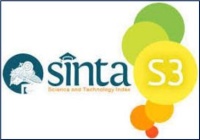Analisis Instrumen Validasi Model Pembelajaran FLIP-LOCAL untuk Meningkatkan Kreativitas dan Kemandirian Siswa
Abstract
This study aims to develop and analyze the validity of the FLIP-LOCAL learning model in enhancing students' creativity and independence. The research employs a quantitative descriptive method, specifically a Research and Development (R&D) approach, focusing on content validity and construct validity, involving two education experts. The model was validated by experts to assess the clarity of its syntax, social system, reaction principles, and effectiveness in learning. The validation results indicate that the FLIP-LOCAL syntax consists of five main stages: preparation, exploration, elaboration, presentation, and evaluation, which are considered systematic and supportive of local potential-based learning. The social system of this model promotes active interaction between teachers and students, while the reaction principles emphasize reflective feedback, despite differences in perception among the validators. The analysis was conducted using Aiken’s V formula and Lawshe’s Content Validity Ratio (CVR), and overall, the model was rated as valid/highly valid with a total score of 58. The FLIP-LOCAL model integrates the flipped classroom approach and Project-Based Learning (PjBL) to enhance student engagement in more independent and creative learning.
Keywords
Full Text:
PDFReferences
Alonso, D., Fabbian, G., Storey-Fisher, K., Eilers, A.-C., García-García, C., Hogg, D. W., & Rix, H.-W. (2023). Constraining cosmology with the Gaia-unWISE Quasar Catalog and CMB lensing: Structure growth. arXiv preprint arXiv:2306.17748.
Barak, M., & Usher, M. (2021). The innovation level of engineering students' team projects in hybrid and online learning environments. European Journal of Engineering Education, 46(5), 728–746.
Bell, S. (2021). Long-term health effects of COVID-19: Disability and function. The National Academies Press. https://doi.org/10.17226/26044
Bennett, J., & McWhirter, R. (2020). Beyond DNA sensing: Expanding the role of cGAS/STING in immunity and inflammation. Frontiers in Immunology, 11(611347). https://doi.org/10.3389/fimmu.2020.611347
Black, P., & Wiliam, D. (2018). Classroom assessment and pedagogy. Assessment in Education: Principles, Policy & Practice, 25(3), 551–575. https://doi.org/10.1080/0969594X.2018.1441807
Borg, W. R., & Gall, M. D. (2007). Educational research: An introduction (8th ed.). Pearson.
Brookhart, S. M. (2013). How to create and use rubrics for formative assessment and grading. ASCD.
Cobb, P. (2021). Designing for productive disciplinary engagement. Journal for Research in Mathematics Education, 52(1), 3–18. https://doi.org/10.5951/jresematheduc.2020.0030
Dillenbourg, P. (1999). Collaborative learning: Cognitive and computational approaches. Elsevier Science.
Gay, L. R. & Mills, G. E, (2020). Educational Research: Competencies for Analysis and Applications (12th ed.). Pearson.
Islam, M. A., & Mollah, M. A. (2020). Content validation of educational measurement tools: A review. International Journal of Education and Practice, 8(3), 79–85. https://doi.org/10.18488/journal.61.2020.83.79.85
Jiménez-González, E., & Torres-López, T. M. (2022). Evaluating the content validity of the Depression Comprehensive Evaluation Tool (DCET): Expert judgment and its role in psychological instrument development. Journal of Psychological Assessment and Evaluation, 34(3), 123–135. https://doi.org/10.1016/j.jpse.2022.04.001
Johnson, D. W., & Johnson, R. T. (1999). Learning together and alone: Cooperative, competitive, and individualistic learning (5th ed.). Allyn and Bacon.
Joyce, B., Weil, M., & Calhoun, E. (2015). Models of teaching (9th ed.). Pearson.
Larkin, T., & Budny, D. (2005, July). Writing as an active learning tool. Dalam Proceedings of the International Conference on Engineering Education, Gliwice, Poland. https://www.semanticscholar.org/paper/Writing-as-an-active-learning-tool-Larkin-Budny/2a582d723b277151e8b830d9364d4f382df73fac
Llewellyn, D. (2013). Teaching high school science through inquiry and argumentation. Corwin Press.
Maulina, E., & Saputra, M. (2023). Evaluating students’ creativity through project-based learning with local potential integration. Journal of Education and Learning, 17(1), 45–56. https://doi.org/10.11591/edulearn.v17i1.21231
Rizal, M., Restyowati, A., & Anggraeni, L. (2024). Penerapan pembelajaran berbasis potensi lokal untuk meningkatkan kreativitas siswa. Jurnal Pendidikan Sains Indonesia, 19(3), 175–189.
Roebianto Adiyo, Savitri, I. S., Aulia, I., & Mubarokah, A. S. L. (2023). Content validity: Definition and procedure of content validation in psychological research. TPM, 30(1). https://doi.org/10.4473/TPM30.1.1
Sadler, D. R. (2021). Formative assessment and the design of instructional systems. Instructional Science, 49(3), 219–234. https://doi.org/10.1007/s11251-021-09547-0
Thomas, J. W. (2000). A review of research on project-based learning. Autodesk Foundation.
Waldetrudis, L., & Maimunah, R. (2021). Peran teknologi dalam meningkatkan keterampilan proses dan motivasi belajar siswa selama pandemi. Jurnal Pendidikan Teknologi, 12(1), 102–115.
Wiyanto, R., Suryani, E., & Anggraeni, L. (2020). Penerapan pembelajaran berbasis proyek untuk meningkatkan kreativitas siswa. Jurnal Pendidikan Sains, 8(2), 110–117.
Zhang, W., & Wang, Y. (2020). Advances in the prerequisite and consequence of STING signaling. Frontiers in Immunology, 11(599095). https://doi.org/10.3389/fimmu.2020.599095
DOI: https://doi.org/10.33394/bioscientist.v13i1.14350
Refbacks
- There are currently no refbacks.

This work is licensed under a Creative Commons Attribution-ShareAlike 4.0 International License.

Bioscientist : Jurnal Ilmiah Biologi is licensed under a Creative Commons Attribution-ShareAlike 4.0 International License
Editorial Address: Pemuda Street No. 59A, Catur Building Floor I, Mataram City, West Nusa Tenggara Province, Indonesia











